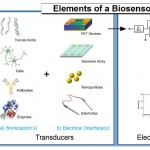 Rapid detection of viruses among potential applications of research at UC Santa Cruz.
Rapid detection of viruses among potential applications of research at UC Santa Cruz.
In 2010, Ahmet Ali Yanik published his first paper on the rapid detection of Ebola virus using new biosensor technology, he and colleagues at Boston University had invented. But he found there was little interest at the time in developing the technology further.
“People told me that there wasn’t any profit in it, because this disease only affects people in the developing world,” Yanik said.
Now, however, Ebola hemorrhagic fever has captured the attention of first world countries in a big way. The current outbreak in West Africa began spreading out of control just as Yanik was setting up his lab as a new faculty member at UC Santa Cruz, where he is an assistant professor of electrical engineering. Yanik plans to resume his work on virus detection in addition to ongoing projects involving biosensors for other biomedical applications. The current Ebola crisis may subside before his technology can be perfected, since there are still many challenges to overcome, but the need will remain for simple and inexpensive virus detection techniques, he said.
“The truth is that Lassa virus, which is related to Ebola and also causes hemorrhagic fever, infects nearly half a million people every year in Africa and kills more people than Ebola, but it doesn’t make the news. So there has been an ongoing crisis with hemorrhagic fever viruses, and now it’s finally getting some serious attention,” Yanik said.
His goal is to create a low-cost biosensor that can be used to detect specific viruses without the need for skilled operators or expensive equipment.
“We need a platform for virus detection that is like the pregnancy tests you can use at home,” Yanik said. “The initial symptoms of hemorrhagic fever are similar to the flu, and you just cannot treat every person with flu symptoms as a potential Ebola-infected patient. It needs to be simple and cheap.”
Source: University of California

















